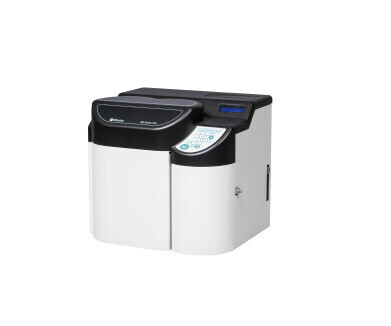Gas chromatography
Analysis of Nitrosamines in Metformin Tablets Using Ellutia’s Thermal Energy Analyser (GC-TEA)
May 21 2024
A recent analysis of nitrosamines in Metformin tablets using Ellutia’s Thermal Energy Analyser (GC-TEA) revealed notable findings. This analytical technique confirmed the presence of N-nitrosodimethylamine (NDMA). The GC-TEA system displayed linear calibration curves for all eight volatile nitrosamines tested, indicating effective performance in detecting these compounds. In the study, samples of 1g and 4g of Metformin were extracted with methanol and analysed. The results showed that higher concentrations of NDMA were detected in the 4g samples compared to the 1g samples, indicating potential variability in NDMA distribution within the tablets. Additionally, early eluting peaks identified during the analysis were attributed to the breakdown products of other less stable nitrosamines. These findings highlight the importance of using GC-TEA for detailed analysis of nitrosamines in pharmaceuticals, ensuring compliance with safety standards and providing essential insights into the quality and safety of Metformin tablets.
Analysis of Speciated Volatile Nitrosamines in Pharmaceuticals by GC-TEA
In the pharmaceutical industry, ensuring medication safety is crucial, especially given the potential risks posed by nitrosamine contamination. Nitrosamines, such as N-nitrosodimethylamine (NDMA), are known carcinogens that can form under certain conditions during drug manufacturing. To address this issue, the 800 series Thermal Energy Analyzer (TEA) by Ellutia offers a solution for the analysis of volatile nitrosamines using gas chromatography coupled with thermal energy analysis (GC-TEA).
Nitrosamines are typically created when an amine (commonly a secondary amine) reacts with nitrosating agents like nitrites. This reaction can occur under acidic conditions or high temperatures during the manufacturing process. The detection and quantification of these contaminants are critical, as seen in the case of Ranitidine—once a widely used antacid medication—where NDMA was found to form over time under normal storage conditions.
According to EU Regulation (EC) No 726/2004, which lists permissible limits for 27 nitrosamines, pharmaceutical companies are required to conduct risk assessments and regular testing for nitrosamines in their products. This ensures that all medications meet safety standards before reaching consumers.
The GC-TEA system by Ellutia operates by separating the nitrosamines in the GC. They are then eluted into the Pyrolyser, which breaks down the nitrosamines to release nitric oxide (NO). This NO is detected by the TEA after reacting with ozone, allowing for quantification of the nitrosamines present.
In practice, pharmaceutical samples are prepared through a method involving methanol extraction, centrifugation, and filtration before being analysed by the GC-TEA. This preparation is critical for achieving accurate and reliable results. Ellutia's TEA is known for its sensitivity and specificity in reducing background noise and interference, common challenges in nitrosamine detection.
The integration of the GC-TEA system into pharmaceutical testing protocols provides a tool for ensuring compliance with safety regulations and protecting public health. By providing methods for analysing volatile nitrosamines, Ellutia supports the pharmaceutical industry’s commitment to safety and efficacy in drug manufacturing.
Events
Apr 27 2025 Portland, OR, USA
May 11 2025 Vienna, Austria
May 18 2025 Tempe. AZ, USA
May 21 2025 Birmingham, UK
Jun 01 2025 Baltimore, MD, USA





.jpg)











